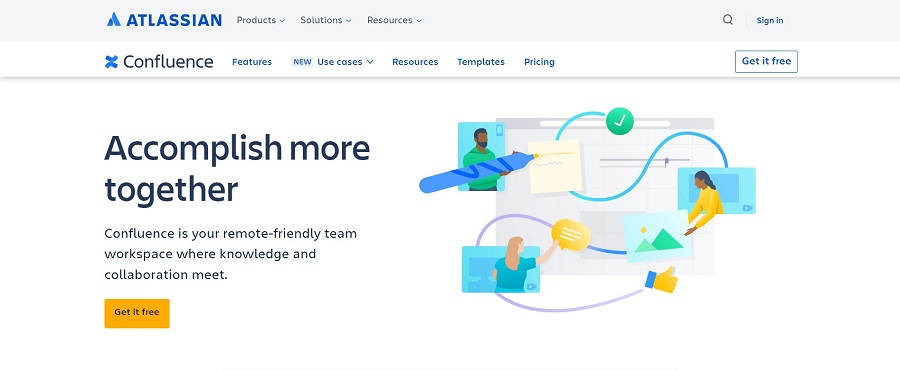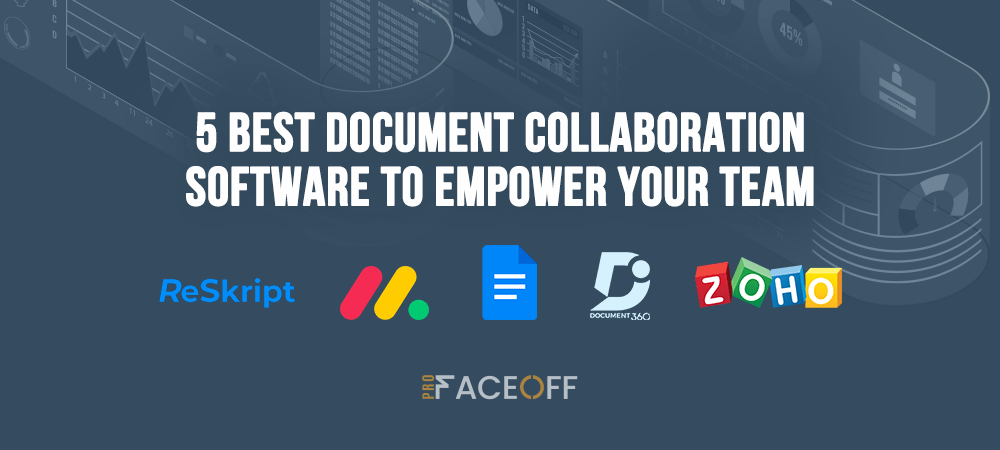Exploring Enterprise Document Collaboration Software
Diving into the realm of Enterprise document collaboration software, this introduction sets the stage for a deep dive into the world of efficient business document management. From enhancing teamwork to streamlining workflows, this software plays a crucial role in modern business operations.
In the following paragraph, we will delve into the specifics of what Enterprise document collaboration software offers and why it is a game-changer for businesses of all sizes.
Definition of Enterprise document collaboration software

Enterprise document collaboration software refers to a digital platform that enables teams within a business to work together on documents, projects, and tasks in real-time, regardless of physical location. Its primary purpose is to streamline communication, enhance productivity, and facilitate seamless collaboration among employees.
Examples of popular Enterprise document collaboration software
- Microsoft SharePoint: A widely used platform that offers document management, collaboration, and workflow automation features.
- Google Workspace (formerly G Suite): Provides cloud-based tools like Google Docs, Sheets, and Slides for real-time collaboration.
- Slack: Known for its messaging capabilities, Slack also allows for document sharing and collaboration within teams.
Key features of Enterprise document collaboration software
Enterprise document collaboration software comes with a range of essential features that make it invaluable for businesses:
- Real-time editing: Allows multiple users to work on a document simultaneously and see changes instantly.
- Version control: Tracks document revisions and ensures that the most up-to-date version is always accessible.
- Access control: Enables administrators to set permissions for viewing, editing, and sharing documents to maintain data security.
- Integration capabilities: Integrates with other business tools and applications to streamline workflows and enhance productivity.
- Mobile accessibility: Provides the flexibility for employees to collaborate on documents from any device, anywhere.
Benefits of using Enterprise document collaboration software
Enterprise document collaboration software offers a wide range of benefits for businesses looking to streamline their operations and enhance team collaboration. By implementing this software, organizations can experience significant improvements in productivity and workflow efficiency.
Enhanced Team Collaboration and Productivity
- Facilitates real-time collaboration: Enterprise document collaboration software allows team members to work on documents simultaneously, making it easier to share ideas and provide feedback instantly.
- Centralized document storage: With all documents stored in a central location, team members can access the latest versions of files, reducing the risk of working on outdated information.
- Improved communication: Features like commenting, tagging, and notifications enable seamless communication among team members, ensuring everyone stays informed and on the same page.
- Increased efficiency: By eliminating the need for back-and-forth emails and multiple file versions, teams can work more efficiently and focus on core tasks, leading to higher productivity levels.
Streamlining Workflow Processes
- Automated document workflows: Enterprise document collaboration software allows organizations to create automated workflows for document approval, review, and sharing, reducing manual tasks and saving time.
- Version control: The software offers version history tracking, making it easy to revert to previous versions of documents if needed, ensuring data integrity and reducing errors.
- Enhanced security: With features like access controls, encryption, and audit trails, businesses can ensure that sensitive information is protected and compliance requirements are met.
- Integration with other tools: Many Enterprise document collaboration software solutions integrate with popular business tools like CRM systems, project management platforms, and email clients, streamlining workflows and improving overall efficiency.
Key features to look for in Enterprise document collaboration software

When selecting Enterprise document collaboration software, it is crucial for businesses to consider key features that will enhance communication, streamline workflows, and improve productivity. These features should cater to the specific needs of the organization and ensure seamless collaboration among team members regardless of their physical location.
Below are some essential features to look for in Enterprise document collaboration software:
Real-time Editing and Version Control
One of the most important features to consider is real-time editing capabilities that allow multiple users to work on the same document simultaneously. This ensures that team members can collaborate efficiently without worrying about version control issues. Version history tracking and the ability to revert to previous versions are also crucial for maintaining document integrity.
Secure File Sharing and Permissions
Enterprise document collaboration software should offer robust security features to protect sensitive information
Integration with Third-Party Tools
To enhance productivity and streamline workflows, choose a document collaboration software that integrates seamlessly with other tools commonly used in the organization. Integration with project management software, communication tools, and cloud storage platforms can help centralize information and simplify collaboration across different departments.
Customizable Workflows and Automation
Customizable workflows and automation features can help streamline repetitive tasks and improve efficiency. Look for software that allows you to create automated workflows for document approval, notifications, and task assignments. This can save time and reduce manual errors in document management processes.
Mobile Accessibility and Offline Sync
In today's fast-paced work environment, it is essential for employees to access documents anytime, anywhere. Choose a document collaboration software that offers mobile accessibility and offline sync capabilities, allowing team members to work on documents even without an internet connection.
This ensures seamless collaboration regardless of location or device.
Implementation strategies for Enterprise document collaboration software

Implementing Enterprise document collaboration software in a business environment requires careful planning and execution to ensure a smooth transition and maximum efficiency. Here are some key steps to successfully implement and optimize the use of this software:
1. Define clear objectives and goals
- Identify the specific needs and requirements of your organization.
- Set clear objectives for implementing the software and define key performance indicators to measure success.
- Ensure that the goals align with the overall business strategy and objectives.
2. Select the right software solution
- Conduct thorough research and evaluate different Enterprise document collaboration software options.
- Choose a solution that best meets your organization's needs in terms of features, scalability, security, and user-friendliness.
- Consider factors such as integration capabilities, customization options, and vendor support.
3. Develop a comprehensive implementation plan
- Create a detailed project plan outlining timelines, responsibilities, and milestones.
- Allocate resources and budget for the implementation process.
- Communicate the plan to all stakeholders and ensure buy-in from key decision-makers.
4. Provide thorough training and support
- Offer training sessions for employees to familiarize them with the software and its features.
- Create user guides and documentation to help employees navigate the software effectively.
- Provide ongoing support and troubleshooting assistance to address any issues or questions that may arise.
5. Monitor progress and gather feedback
- Regularly track the implementation progress against set milestones and objectives.
- Solicit feedback from users to identify areas for improvement and address any challenges or concerns.
- Use analytics and reporting tools to measure the impact of the software on productivity and collaboration within the organization.
Last Point
As we wrap up our discussion on Enterprise document collaboration software, it's clear that this technology is not just a tool but a strategic asset for businesses looking to thrive in a competitive landscape. From improved collaboration to streamlined processes, the benefits are vast and impactful.